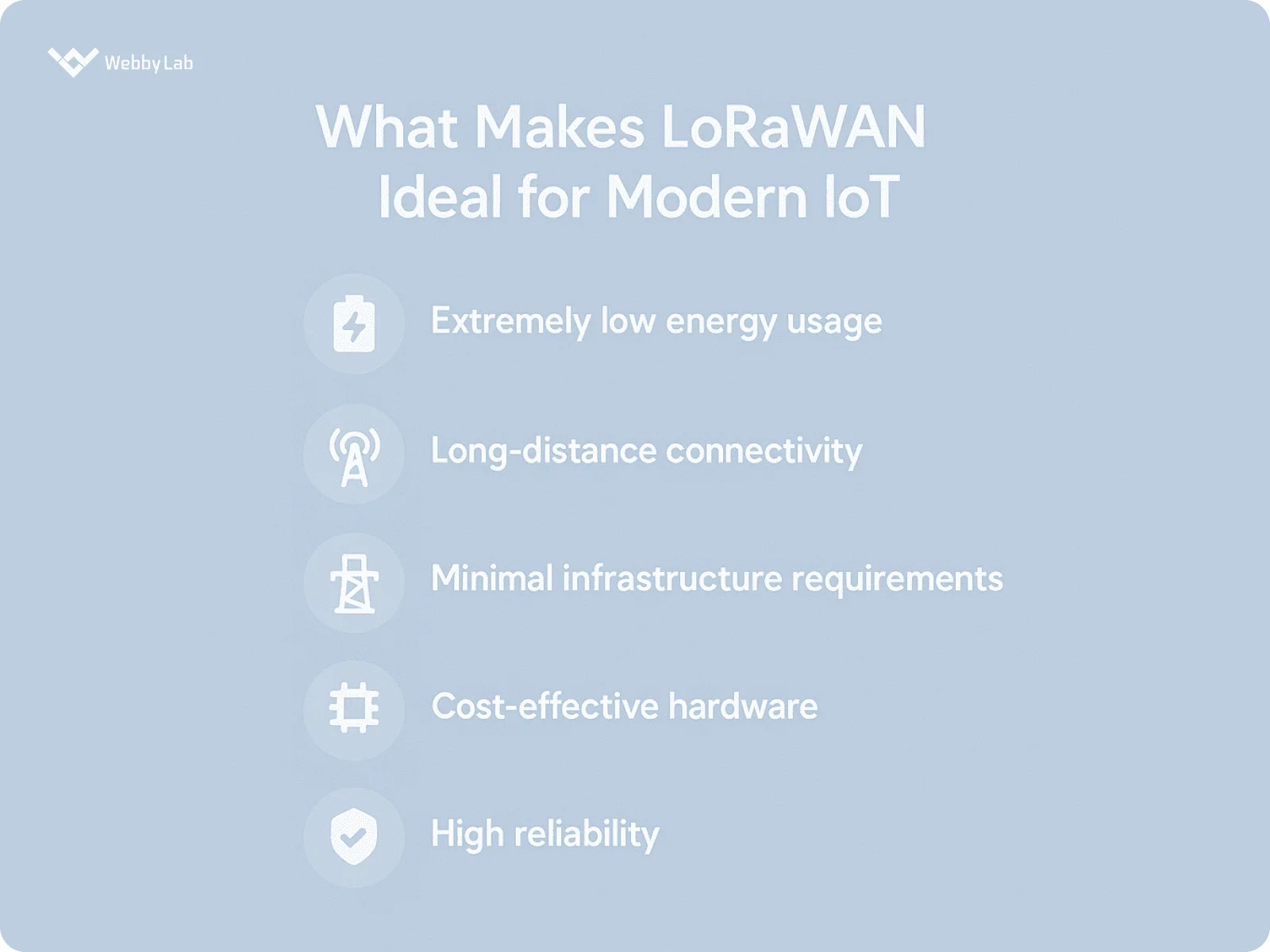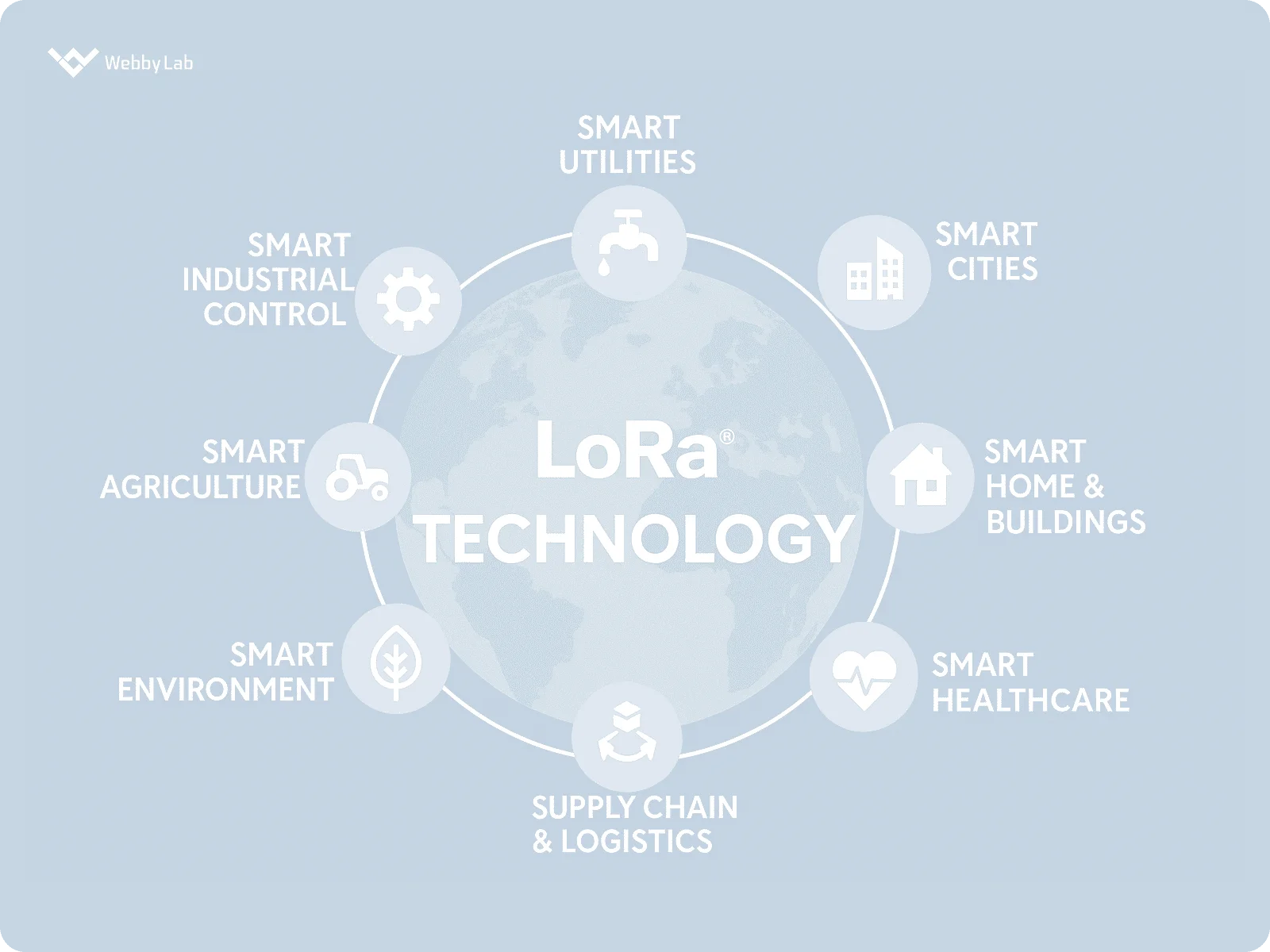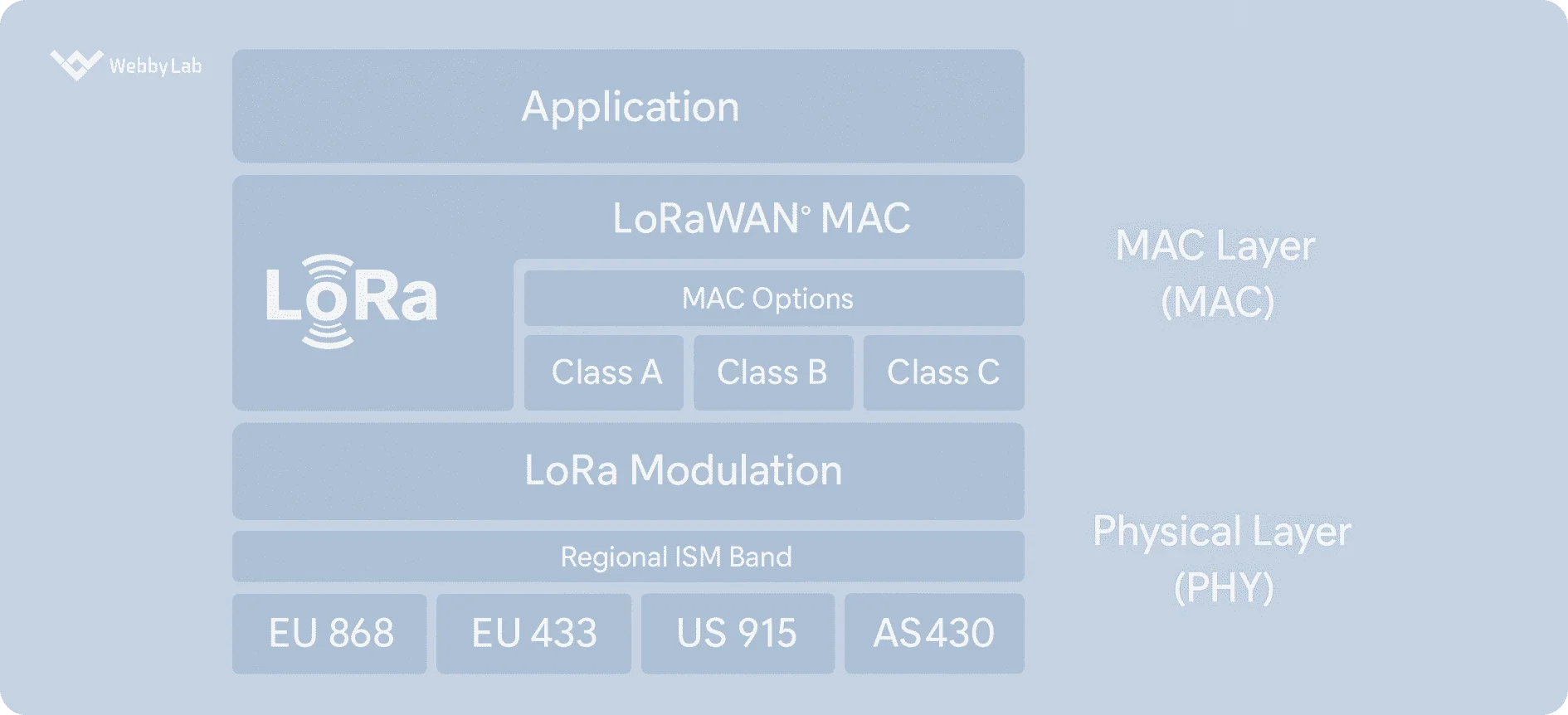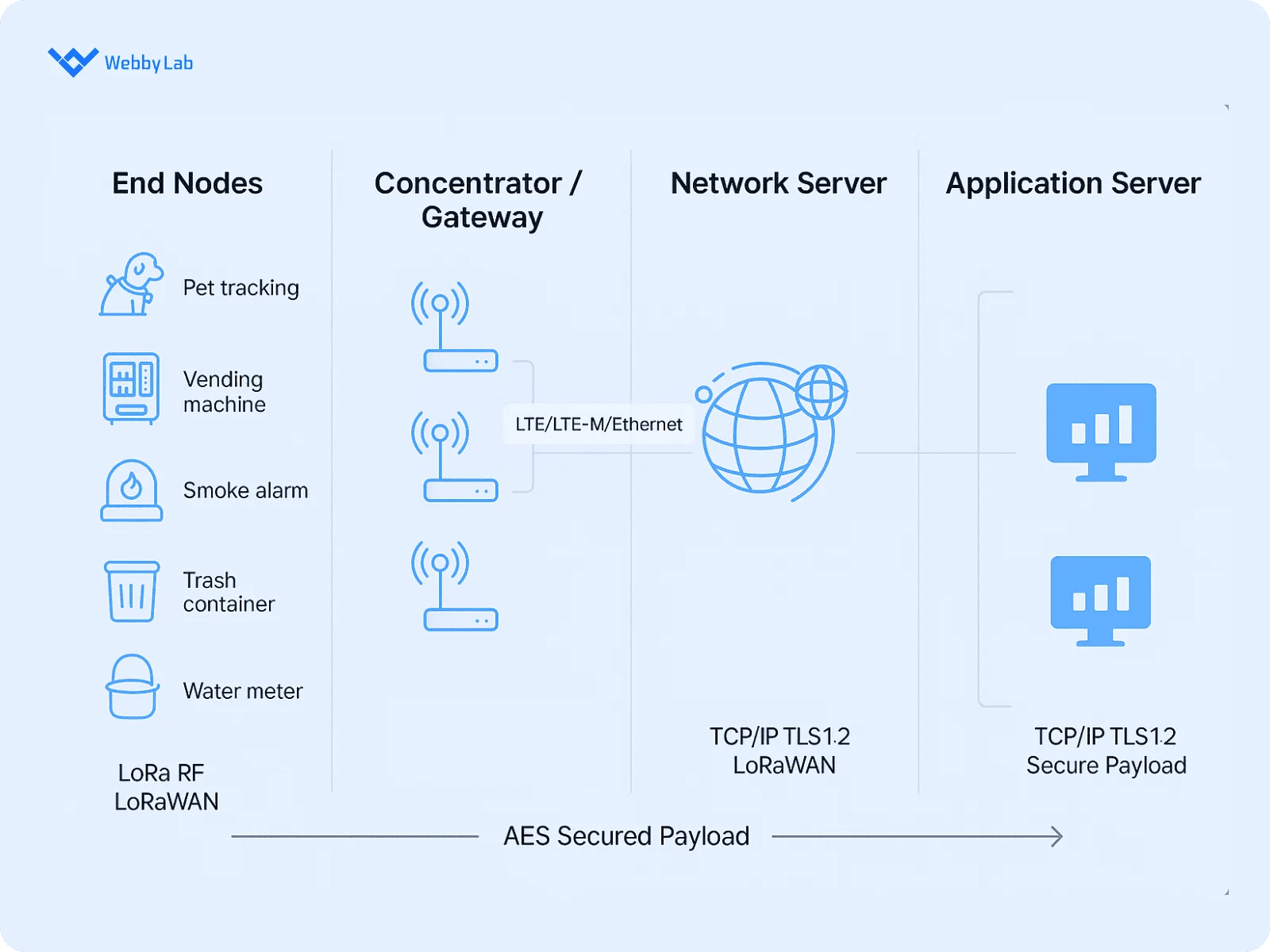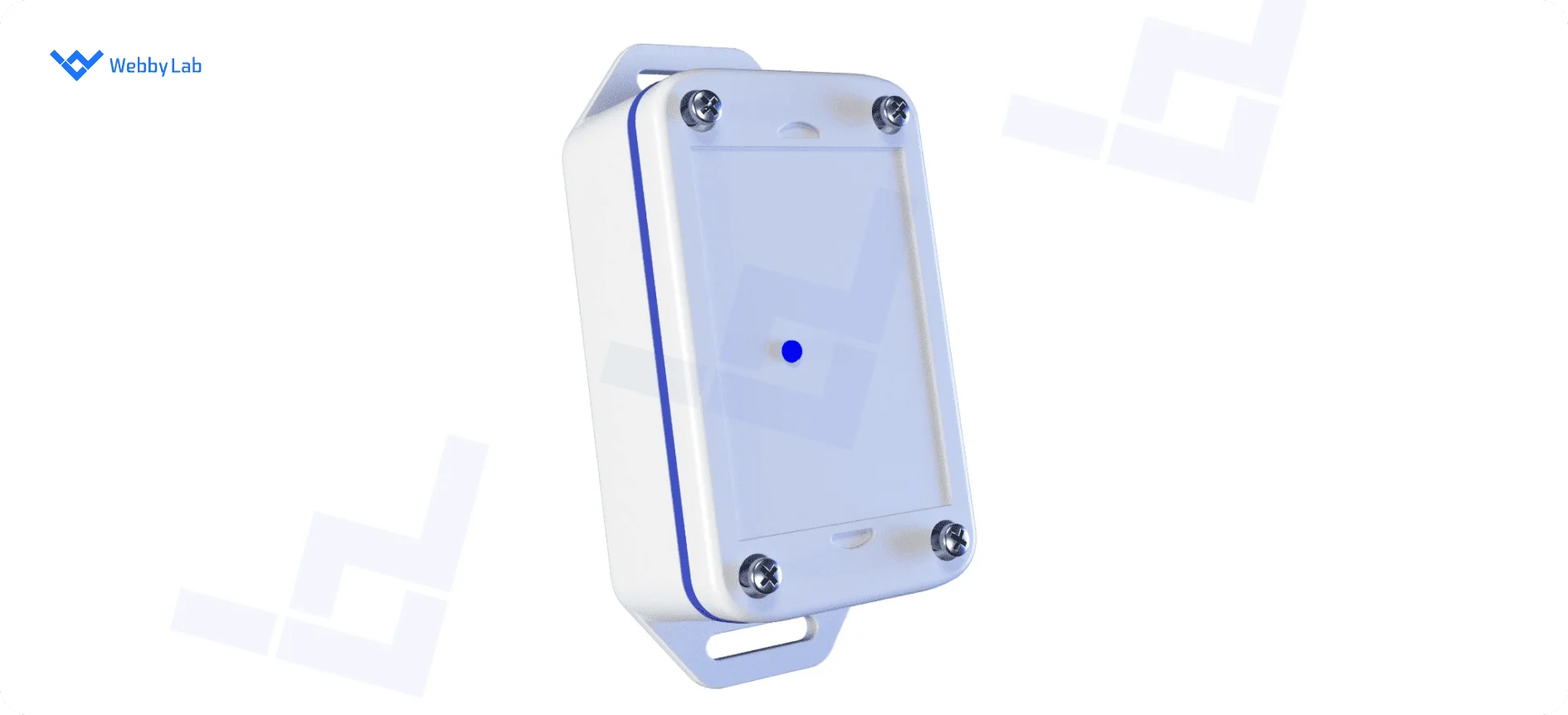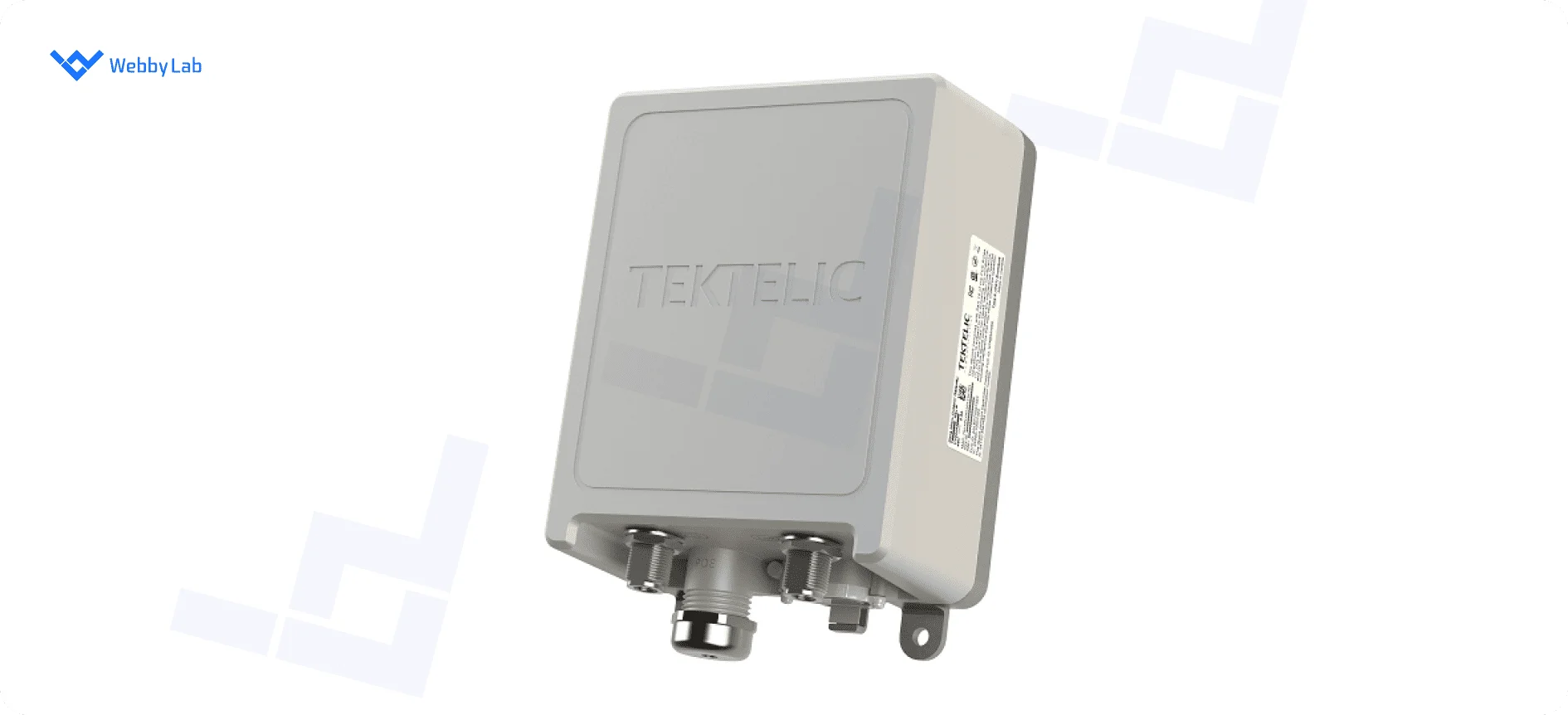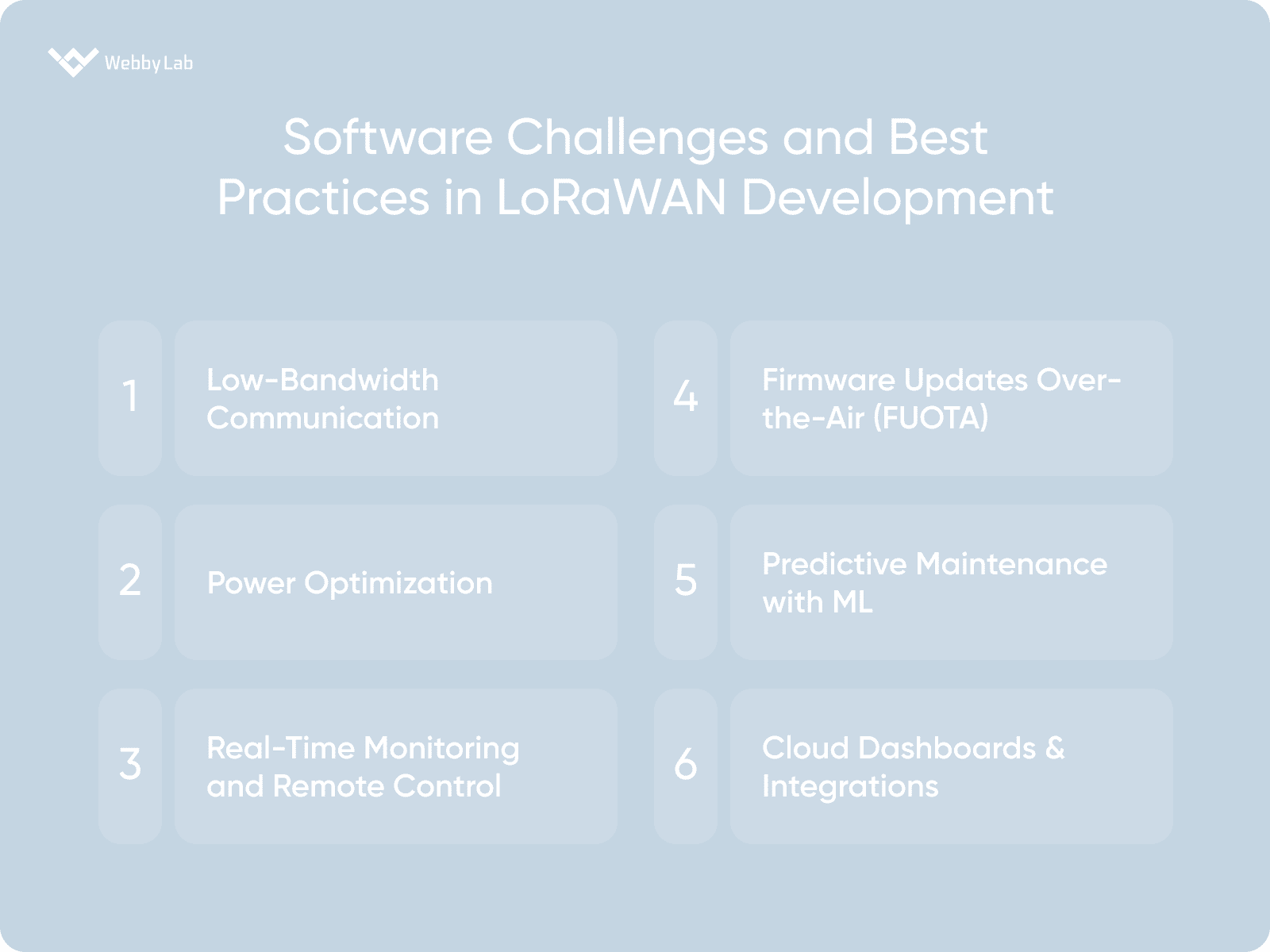Using LoRa Devices and Gateways in Scalable IoT Solutions
Written by:

Kostiantyn Oliynyk
Head of IoT at Webbylab
With a robust academic background in Telecommunication Systems Engineering, I apply my knowledge to lead innovations in the IoT domain. Starting as the first team member in the newly formed IoT department at WebbyLab, I've spearheaded its growth, fostering the expansion into embedded and hardware development alongside our core software projects. My dedication lies in pushing the boundaries of IoT technology, fostering a culture of innovation and excellence that profoundly impacts our clients' operational success.
The LoRaWAN infrastructure doesn’t incur a lot of maintenance expenses. Once installed, LoRa devices can run for several years on one battery, requiring little to no physical maintenance. Gateways also need minimal upkeep — especially with remote updates and cloud monitoring.
There are several options depending on your needs:
- NB-IoT and LTE-M for cellular-based IoT with strong coverage but higher power use.
- Zigbee and Bluetooth Mesh for short-range, dense device networks.
- Wi-Fi HaLow for low-power, medium-range applications.
- Sigfox for ultra-low-data, low-power use, but with limited flexibility.
Each has trade-offs compared to LPWAN technology for IoT.
To get started with LoRaWAN, you’ll require:
- LoRa devices like sensors, meters, or trackers.
- LoRaWAN gateways to receive and forward their signals.
- A network server to manage routing, security, and data handling.
Depending on your needs, the server can be cloud-based or local.
LoRa is built for low-power, long-range IoT networks. In open areas with minimal interference, it can reach a maximum of 15 km in range. In urban environments, the range is typically around 2–5 km, depending on obstacles, building density, and network configuration.

